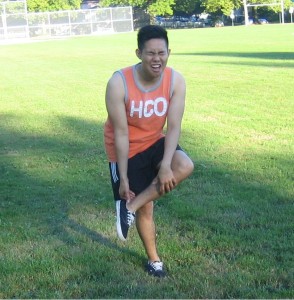The Achilles tendon is the biggest tendon in the body that is capable of supporting pressure of up to 1,000 lbs. The Achilles tendon is positioned in the rear part of the heel and connects the heel bone to the muscles of the calf. Oftentimes, overuse due to running can cause the inflammation of the tendon, resulting to Achilles tendonitis.
What are the possible causes?
Achilles tendinitis can develop for various reasons including overuse, increasing the speed or mileage quickly while running, running on hills, climbing stairs, sprinting, starting off too fast after a lay-off, heel spurs, tight muscles in the calf, incorrect warm-up before exercise, lack of stretching before exercise, trauma to the tendon, wearing shoes that do not provide enough support and flat arches.

What are the types?
It is important to note that there are two types of Achilles tendinitis – insertional and non-insertional. When it comes to non-insertional tendinitis, it develops once the central part of the tendon tears and becomes swollen. It usually develops among active and young individuals. As for insertional Achilles tendinitis, it affects the inferior part of the tendon that connects to the heel. Take note that this type can occur to anyone, even those who are not physically active.
What are the symptoms?
The symptoms of Achilles tendinitis include heel pain that becomes worse with activity, stiffness of the Achilles tendon, heel pain after running, heel pain in the morning, swelling in the rear part of the heel and diminished range of motion on the affected foot. Once the individual feels a popping sensation in the rear part of the heel, it indicates a ruptured tendon. You can readily manage the symptoms as long as you will register for first aid training today.
Treatment of Achilles tendinitis
The condition typically heals on its own with conservative measures at home, yet some might take time for the pain to completely subside. Take note that the treatment must be started right away. It can take up to three months or more for the pain to completely subside, even if the treatment is started right away.
The recovery period can take up to six months if the treatment was postponed for several months. The initial task is to rest the affected foot. The individual should not engage in any activities that will worsen the pain especially high impact activities such as running. As an alternative, low-impact activities such as biking, walking, swimming and elliptical machines are recommended. You can apply ice over the affected tendon for 20 minutes at several times in a day in order to minimize the pain and swelling. Non-steroidal anti-inflammatory drugs (NSAIDs) such as ibuprofen can help diminish the pain and swelling.
Considerations to bear in mind
A doctor must be consulted if the individual suffers from severe pain in the heel, inability to push up on the toes or push the foot down as well as inability to bear weight on the foot.
The ideal way to prevent Achilles tendinitis from developing in the future includes steadily increasing the intensity of the running workout, wear proper running shoes, avoid activities that worsen the pain, proper stretching before and after running, warm-up before stretching, try cross-training and perform exercises that build-up the calf muscles.
